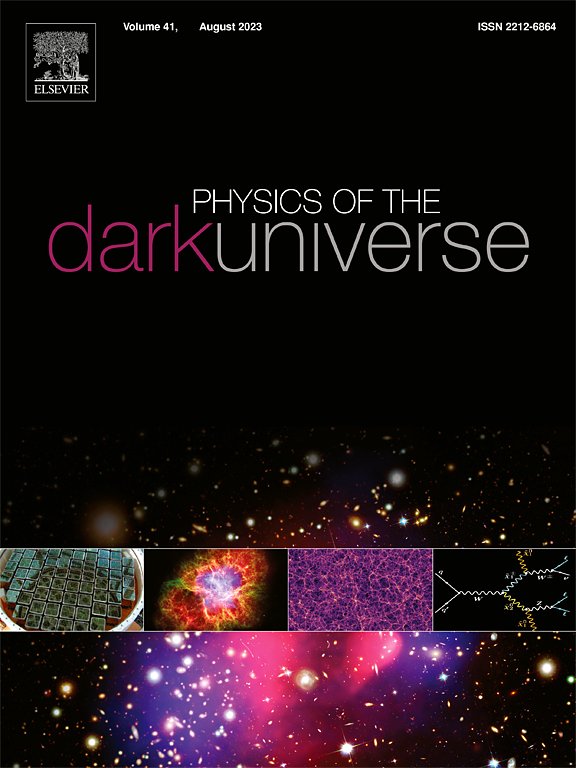Anisotropic cosmology using observational datasets: Exploring via machine learning approaches
IF 6.4
2区 物理与天体物理
Q1 ASTRONOMY & ASTROPHYSICS
引用次数: 0
Abstract
In the current study, we present the observational data constraints on the parameters space for an anisotropic cosmological model of Bianchi I type spacetime in general relativity (GR). For the analysis, we consider observational datasets of Cosmic Chronometers (CC), Baryon Acoustic Oscillation (BAO), and Cosmic Microwave Background Radiation (CMBR) peak parameters. The Markov chain Monte Carlo (MCMC) technique is utilized to constrain the best-fit values of the model parameters. For this purpose, we use the publicly available Python code from CosmoMC and have developed the contour plots with different constraint limits. For the joint dataset of CC, BAO, and CMBR, the parameter’s best-fit values for the derived model are estimated as km/s/Mpc, , , and . To estimate , we explore machine learning (ML) techniques like linear regression, Artificial Neural Network (ANN), and polynomial regression and thereafter analyze the results with the theoretically developed for the proposed model. Among these ML techniques, the polynomial regression exceeds the performance compared to other techniques. Further, we also note that larger dataset provides a better understanding of the cosmological scenario in terms of ML view point.
使用观测数据集的各向异性宇宙学:通过机器学习方法进行探索
本文提出了广义相对论中Bianchi I型时空各向异性宇宙学模型参数空间的观测数据约束。为了进行分析,我们考虑了Cosmic chronometer (CC)、重子声学振荡(BAO)和宇宙微波背景辐射(CMBR)峰值参数的观测数据集。利用马尔可夫链蒙特卡罗(MCMC)技术约束模型参数的最佳拟合值。为此,我们使用CosmoMC中公开可用的Python代码,并开发了具有不同约束限制的等高线图。对于CC、BAO和CMBR的联合数据集,导出模型的参数最佳拟合值估计为H0=69.9±1.4 km/s/Mpc, Ωm0=0.277−0.015+0.017,ΩΛ0=0.722−0.017+0.015,Ωσ0=0.0009±0.0001。为了估计H(z),我们探索了机器学习(ML)技术,如线性回归、人工神经网络(ANN)和多项式回归,然后用理论开发的H(z)分析所提出模型的结果。在这些机器学习技术中,多项式回归的性能优于其他技术。此外,我们还注意到,从机器学习的角度来看,更大的数据集可以更好地理解宇宙场景。
本文章由计算机程序翻译,如有差异,请以英文原文为准。
求助全文
约1分钟内获得全文
求助全文
来源期刊

Physics of the Dark Universe
ASTRONOMY & ASTROPHYSICS-
CiteScore
9.60
自引率
7.30%
发文量
118
审稿时长
61 days
期刊介绍:
Physics of the Dark Universe is an innovative online-only journal that offers rapid publication of peer-reviewed, original research articles considered of high scientific impact.
The journal is focused on the understanding of Dark Matter, Dark Energy, Early Universe, gravitational waves and neutrinos, covering all theoretical, experimental and phenomenological aspects.
 求助内容:
求助内容: 应助结果提醒方式:
应助结果提醒方式:


